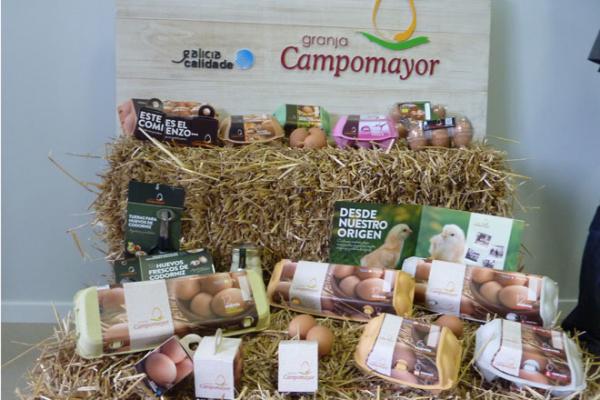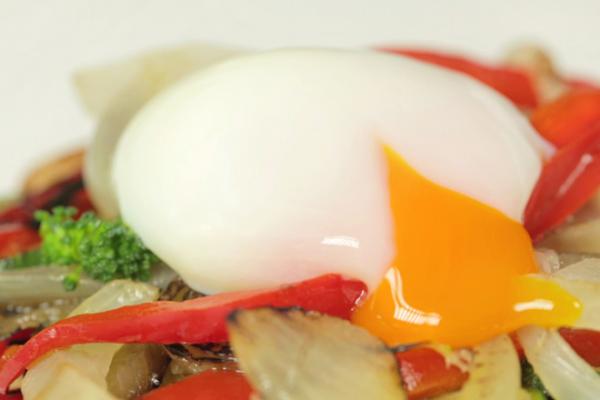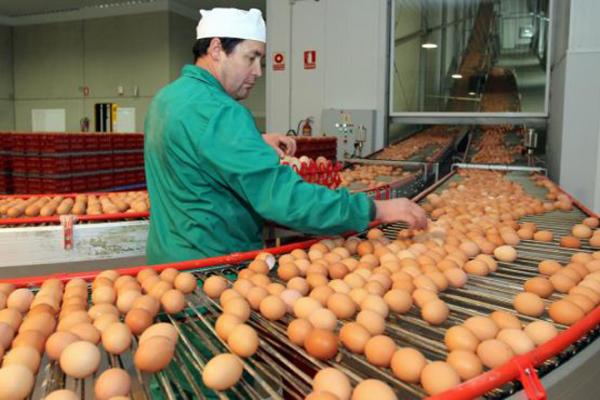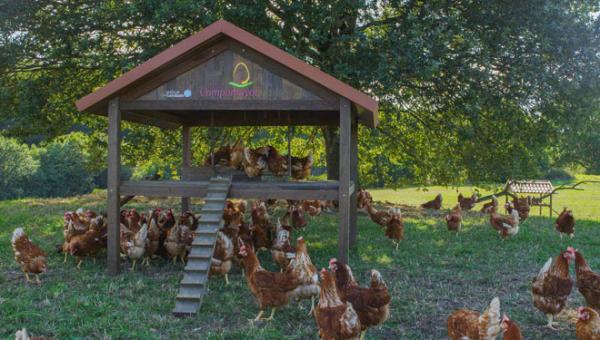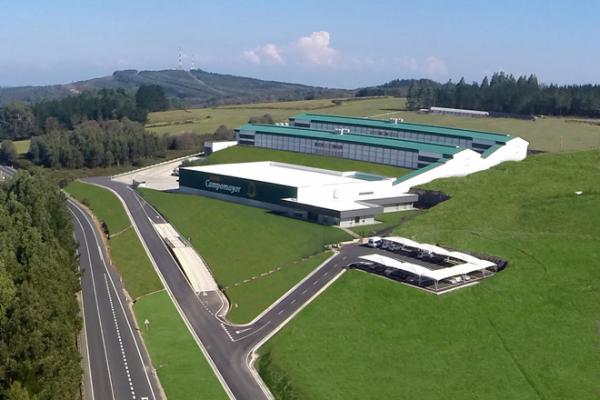“We produce 600,000 units per day of a superfood as is the egg”
Rodrigo García is the fourth generation of Granja Campomayor, a family business that is revolutionising the egg world in Spain from its headquarters in Ximonde (Palas de Rei-Lugo).
This year a low temperature egg was launched on the market, an innovative product that has received numerous awards, and in 2018 a new line of products will be brought to the market, which are linked to an ambitious R+D+I project.
The aim is to give more value added to a product that is in fashion, as is the egg, and where more 600,000 units leave Granja Campomayor’s premises every day.
-What are the large numbers of Granja Campomayor today?
At present approximately 600,000 eggs leave our premises every day. We employ more than 50 people and turnover in 2016 came to 16 million euros. This year we hope to exceed this figure.
– What kind of products do you have on the market and what is the percentage of their production?
We have a wide range of products in Granja Camapomayor, from the traditional egg, the free range egg, the organic egg and the specialities: the Omega3 egg, the delicatessen egg, the truffle egg is a quail egg, and also including the egg products (egg derivatives) as well as pasteurised liquid yolks, pasteurised liquid egg whites and pasteurised whole eggs, as well as boiled eggs and the eggs cooked at low temperature.
-Where are your main markets? Are you exporting?
Our main markets are Galicia, Asturias, Madrid, in general all over the north of the Peninsula. We do not export a lot due to the product’s specifications, as it is sensitive and has a relatively short best before date. This explains why we only export some liquid egg to Portugal.
-Two years ago we set up the pasteurisation plant, one of the most modern in Europe. What balance do you make of this project two years later?
From Granja Campomayor we see that pasteurised liquid egg is increasingly becoming more popular, especially for bakeries and catering companies, as it is a very clean product that has a longer useful life than egg in a shell.
In addition, it is a product that provides them with security as it is analysed in our laboratories, and saves on time and labour. We produce whole egg, yolk and egg white that are pasteurised separately in different formats. The pasteurised liquid egg is a product that despite being on the market for many years, is still a great unknown among the general public but is required by the regulations and in catering they are being cooked at less than 65º.
Pasteurised liquid egg is increasingly becoming more popular”
Taking stock of the past two years we can see many customers that are satisfied with a product that makes their daily work easier and has all the quality guarantees. We also see that some customers who were reluctant to use this type of product, but that on trying our pasteurised liquid egg say they do not want to go back to the traditional egg in a shell, as it works for them in exactly the same way.
-The European consumer calls for increasing animal welfare. How do you deal with this issue in Granja Campomayor?
It is true that the consumer is increasingly thinking more about animal welfare and sustainable agriculture. We are focusing more and more on the production of free range and ecological eggs because we are seeing that this is what our customers are demanding.-
-What is your birds’ feed like? Do you have your own feed factory?
Our hens feed is changed according to needs, depending on the hen’s stage of life, from the moment it is a chick until it reaches maturity and becomes a laying hen.
We buy our raw materials and a trusted company is in charge of carrying out all the grinding process and distributing the feed to each of our centres. Our feed is mainly composed of cereals and legumes: corn, wheat, soy bean, sunflower and some vitamins such as calcium carbonate.
-The organic sector is also increasingly taking a market share in Spain. Are you planning to enter into this type of production?
We are currently a partner with farms in this type of breeding. We sell a normal organic egg (M-L size) and also the gourmet selection, size L, which is selected and packaged by hand. We plan to set up some own organic farms in the immediate future.
“We plan to set up some own organic farms in the immediate future.”
-This year you launched the low temperature egg. Tell us what it consists of, what type of audience it is aimed at and how it is working in the market.
This year we launched a new production line that consists of the industrial processing and marketing of low temperature eggs, mainly for restaurants and catering. Our innovative egg is cooked at a low temperature made with eggs from hens at a particular laying stage and a specific weight. The production process requires a thorough control of the temperature, both when cooking and cooling.
The low temperature egg is cooked in its own shell. And this achieves a solidified egg white, with a creamy look and a liquid and creamy yolk. On cutting the egg, the yolk oozes out slowly, providing it with an inimitable flavour and texture. It is a very healthy, natural egg, as it is cooked with no oils.
The low temperature egg is a new product on the market, which makes work easier for the catering sector, given its complex and thorough cooking process, saving time and obtaining homogeneity. This year we received numerous prizes that awarded the innovation of our already cooked and ready to eat egg.
-Can you tell us about some of the other R+D+I projects that you are working on?
It is true that we are immersed in a very ambitious R+D+I project, but much to my regret I still can’t tell you much more about it. We look forward to be able to provide you with some more news in the near future. In 2018 we hope to launch a new line of products linked to the R+D+I project.
-Do you have plans to open new farms, and in which locations?
Yes, we are going to open up new organic and free range farms over the next few years, but it is still too early to determine the locations.
-The egg sector has been growing in recent years. What do you attribute this recovery of consumption?
A few years ago the egg was a product that was rejected because it was believed that it helped to increase cholesterol, made you put on weight, etc. However, today and after numerous investigations it is considered a superfood, the most complete food that there is after milk. This way, it helps to maintain a healthy weight, develops the brain and memory, looks after the immune system, bones, teeth and helps to keep skin and sight healthy. Even today the most prestigious chefs use eggs as the main element of their preparations.
“In the next few years consumption trends will move towards a healthy product and animal welfare”
-Where do you think egg consumption trends will go in the coming years?
I believe that in the next few years consumption trends will go towards the healthy product and animal welfare, in fact we are already noticing this trend from the consumer.
We also note the increased consumption in pasteurised liquid egg white, due to diets in people who want to look after themselves. A product with a lot of protein and with no fat that offers many cooking possibilities.
We invite consumers to try Granja Campomayor eggs because we firmly believe that not all eggs are equal and the difference is very clear. We can offer this egg with an orange-coloured egg yolk, with an unforgettable texture and flavour, reminiscent of the eggs our grandparents ate. When you try them, we are sure you will repeat!
“The Galicia Calidade seal provides us with great visibility in the Spanish market”
-Why did you decide to join the Galicia Calidade seal and what benefits is it providing?
Joining the large Galicia Calidade family meant being recognised for good work that has identified us as a brand from our beginnings. For Granja Campomayor it is an honour to have such a distinction that is verified with several quality checks and that gives us great visibility in the national market.
-Does the Galicia brand help you to sell outside our community?
Of course, the Galicia seal is a very appreciated guarantee outside our borders, especially in Madrid. People who try the Galician product, which has a lot of care and dedication behind it, know how to appreciate quality and return to buy our products again and again. For us, the fact that our customers repeat and are faithful to our brand, is our greatest achievement. Our egg has a very different colour, texture and taste.
